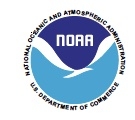The content of this factsheet was shared with permission and can be found in its original format on Disaster Aid: Resources for Other States, Sea Grant Louisiana.
The federal government provides several types of disaster aid related to major storm events. Aid programs can be provided to individuals as well as communities. The specific type of aid available will depend on the storm event and its disaster declaration. The disaster declaration will establish the locations and type of aid available for that disaster. The information below provides an overview of common types of aid following a major disaster. It is not an exhaustive list.
Common Types of Individual Federal Assistance
Individual Assistance
is direct assistance to individuals and households who have necessary expenses and serious needs they cannot meet due to the disaster. Individual assistance is available for up to 18 months from the date of the disaster declaration but must be registered for within 60 days of the major disaster, with limited exceptions. Individual assistance can cover certain expenses including funds to cover rent of alternative living units, funds to repair or replace residences, and funds to meet medical, dental, childcare, and funeral needs. It may also provide temporary housing units that the individual can purchase or lease. Individuals must apply for this assistance through FEMA.
Unemployment Assistance
is available to any individual unemployed due to a major disaster. These benefits are available for as long as deemed appropriate but no longer than 26 weeks after the major disaster is declared.
Crisis Counseling Assistance & Training
provides professional counseling services to victims of major disasters who have been traumatized by or exacerbated by the major disaster or its aftermath. These services include financial assistance to mental health organizations. To obtain assistance, the Governor must initiate an assessment of the need (which determines the estimated size and cost) for the services within 10 days of the disaster declaration. These services are free and confidential.
Small Business Association (Sba) Loans
may also be available to individuals and businesses. These low interest loans can assist property owners with the cost of repairs following a storm. Money from these loans is often received faster than some grant programs. However, loans must be repaid.
Serious Needs Assistance (Sna)
is a new cash relief program beginning March 22, 2024. This new program is designed to provide more immediate financial assis-tance for applicants with serious needs or expenses after a disaster. Serious needs might include food, water, fuel, infant formula, and other immediate expenses. SNA may also address unexpected needs relating to sheltering and evacuation. To qualify, applicants must be displaced from their homes or need to shelter elsewhere due to storm damage. Applicants must express serious needs when registering for assistance and request this assistance. Qualifying households will get a payment of $750 to help cover those needs.
Common Types of Community Level Federal Assistance
General Federal Assistance
allows federal agencies to use their resources to support state and local response efforts.
Essential Assistance
provides for federal support critical to meeting immediate threats to life and property during the disaster. This can include things like food and medicine immediately necessary during a disaster. It can also include support for debris removal when that debris is an immediate threat to life, public health, or safety. It can also support debris removal if the debris would cause significant damage to improved public property or improved private property if the removal serves the public interest.
Public Assistance Grant Programs
are accessible to reimburse state and local governments for emergency measures. These grants can include funding for repair work to damaged facilities. Other types of awards include restoration of roadways, parks and recreational areas, and utilities.
Community Disaster Loans
are available to local governments who have demonstrated a need for financial assistance due to the disaster causing a substantial loss of revenue. Repayment of the loans can be cancelled if, in the 3 years after the major disaster, the local government’s revenues are insufficient to operate within the budget.
Federal Hazard Mitigation Grants
are often available during the longer-term recovery phase following a disaster event. These grants are aimed at reducing risk of future damage, hardship, loss, or suffering in an area affected by a major disaster. Examples of projects that can be funded by a Hazard Mitigation Grant include a range of activities.
Community Development Block Grants (Cdbg) Disaster Recovery Funding
are grants provided through the U.S. Department of Housing and Urban Development (HUD) to states, cities, and parishes in impacted areas. While these funds come later in the recovery process, the money received by governments can be passed on to homeowners and renters in the form of recovery funding programs.
Resources
Find your disaster declaration at FEMA’s disaster declaration website.
Acknowledgement
This research was conducted by Louisiana Sea Grant Law & Policy Program with support from the Coastal Response Research Center and the NOAA Disaster Response Center.
All information current as of Februray 2024. Information reflects new rule issued by FEMA on January 22, 2024.
Publication date: Feb. 1, 2024
N.C. Cooperative Extension prohibits discrimination and harassment regardless of age, color, disability, family and marital status, gender identity, national origin, political beliefs, race, religion, sex (including pregnancy), sexual orientation and veteran status.



